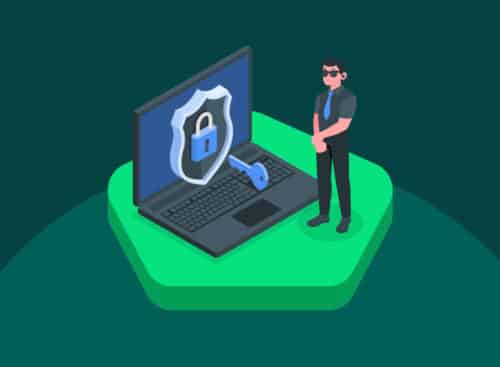
Beyond Passwords: On the other hand, digital security should not limit creativity and citizens’ right to freedom of expression.
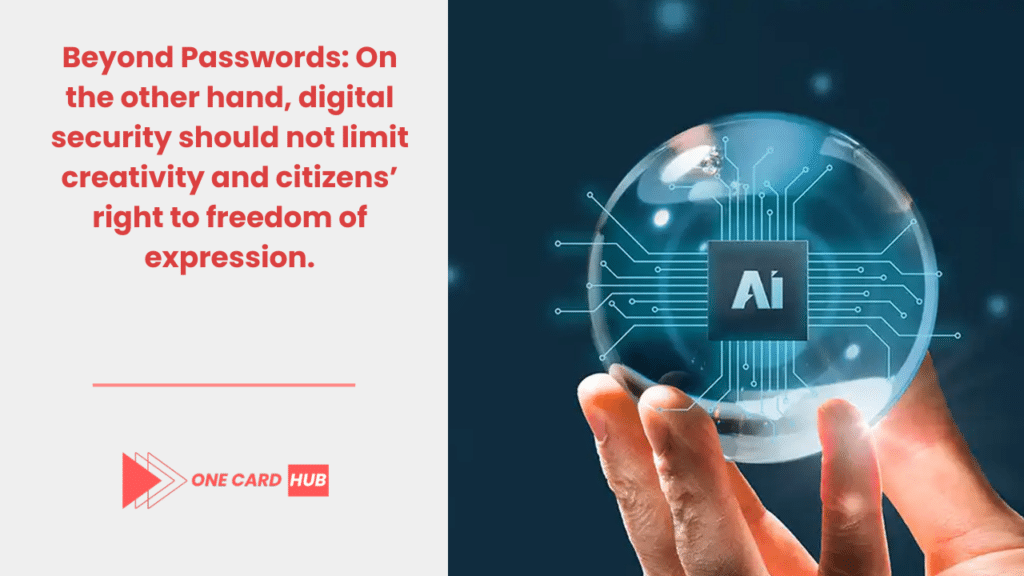
The digital era only means that we are faced with data hacking exploits wherein passwords, on their own, are now not considered sufficient enough to ensure our online identities and data are safeguarded from unlawful access. Today's cyber threats are very highly evolved, moving beyond the old type but harder to detect and beating traditional security; pushing the frontiers of security measures. The following blog post analyzes the hardened digital security beyond simple password usage via advanced methods and tools which can easily counter the constantly increasing digital threats in our modern society.
Multi-Factor Authentication (MFA)
With MFA unnecessary additional conditions are set and a user has to complete two or more steps to successfully enter digital facilities. The process of combining known factor (as passwords)
with the ones you possess (such as a phone or biometric token) and those that are with you (the biometric data) is called this. MFA will help mitigate the risk of cyberattack even in case of password being compromised simply due to the highly unlikely incident of unauthorized access.
Biometric Security
Among biometric methods of security, are biometric technologies which are based on behavioral or physical properties of people for identification and access control. Common approaches are the fingerprinting, the scan of face, and the voice recognition systems. Through biometrics, increased security and convenience is what the users get as the identifiers used are difficult to clone or steal as compared to the conventional passwords.
Behavioral Biometrics
Being in the initial stage of development, behavioral biometrics seeks to recognize silhouette characteristics in human activities to verify users. It also covers the way people type, their cursor positions, devices’ arrangement and even the manner in which they work with applications. What is benri of behavioral biometrics is the authorship of continuous authentication while not affecting the user experience.
Encryption
Data encryption is the foundation of digital security which ensures data is constantly transformed into an unintelligible code that can only be read by someone who knows the key. Data can’t be read by third parties during transmission as end-to-end encryption guarantees protection for data from interception in both transferring and routing. A further advantage of encrypted storage is that it prevents the data from being at risk during storing process. Therefore, the data is unreachable for the unauthorized users.
Zero Trust Security Model
The Zero Trust model is based on the assumption of "never trust, always verify." Trusting anybody, whether it is inside or outside the organizational network, is eliminated at the fundamental level. The embodiment of this method requires a strong mechanism of identifying, granting of rights with a high level of confidence and micro-segmentation which will ensure the desired data and systems’ security from different threats.
This includes securing Domain Name System (DNS) queries, securing internet of things (IoT) devices, and administering data loss prevention (DLP) measures.
SASE bridges the function of network security and wide area networking (WAN) to fulfill the demands for agile and secure access of the mobile user community and applications in the cloud. It ties into different services such as secure web gateway, firewalls, and zero trust network to provide the single, unified network security platform that boosts security with simple management.
Blockchain Technology
Basically built-up from the ground for digital funds, blockchain tech provides an option of recording transactions which is secure and transparent. The blockchain has decentralized humanity such that its cryptographic algorithms can be harnessed for securing online identities, the data integrity, and facilitation of secure and tamper-proof transactions.
The rapid evolution of Artificial Intelligence and Machine Learning technology has made it a driving force of the industry.
AIs (Artificial Intelligence) and MLs (machine learning) finds more prevalent use in detecting and neutralizing cyber threats. These technologies can be configured to review mass databases for attack signatures and trigger automatic protection systems as well as scan and forecast software glitches and other vulnerabilities, thereby providing forward-looking defense in cyberspace.
The future of digital security is a complex and evolving discussion that involves numerous stakeholders and a variety of governance structures.
It should be stressed that the defensive mechanisms need to respond to the constantly transforming threats. Password-based authentications must be replaced with improved technology and security tactics while we counsel more on cybersecurity due to an emerging interactive world. Through multimodal security measures both, organizations and individuals are equipped with better weaponry that strives to thwart the highly specialized cyber threats we confront today and tomorrow. The path to achieving more secure digital avenues is a never-ending one, with due diligence, fresh ideas, and strategies to combat evolving security concerns being critical.
Privacy-Enhancing Technologies (PETs)
In terms of privacy concerns, the latest PETs become quite appealing. These tools are devised to hedge user's personal data usage by lessening the amount of data without robbing functions of digital services. Data techniques like anonymisation, secure multi-party computation, and differential privacy, all of which allow personal data to be used, or shared without it exposing individual identities, present a new layer of protection and act as shield in this data-centric world.
Quantum Cryptography
Quantum computing introduces a new potential kind of vulnerability for classical encryption systems. In addition to Quantum Communication, cryptology offers a solution to this problem by means of Quantum Key Distribution (QKD). The latter has been proved, in theory, to be hack-proof against a quantum computer attack. The parties communicate over ordinary channels providing a secret key in classical form to any electronic device. The QKD is supposedly secure as any effort to eavesdrop during the key exchange process will change the quantum state of the system and thereby expose that a third party is attempting to access the keys.
Federated Identity Management
With Federated Identity Management (FIM), login credentials for several different systems and applications can be used by a user for authenticating to multiple resources by using an identity provider which is trusted by all the services. This is the process of their login is much simpler and also enhances the security by reducing the number of passwords that user is required to have and the use of centralized system for managing the controls of access is in place. FIM systems as a rule feature advanced authentication tools and additionally use biometrics and behavioral analytics to finish access management across domains.
The Internet of Thing Security is the term used to elaborate the whole present and probable future challenges related to the security and privacy of the net connected objects ranging from simple devices used at homes to highly specialised devices used in industrial control systems.
The Internet of Things (IoT) has ushered in the age of smart devices, and the number of these devices is growing at a rapid rate in addition to their secure functioning becomes a crucial aspect. Security in the internet of things involves securing the integrity of devices, safeguarding data transmission, and controlling disclosure of person data. These techniques involve device authentication, software updates, and the implementation of point-to-point, secure, encrypted communication protocols. Although, add into the process a security-by-design approach for IoT devices in developers could also help to outset vulnerabilities.
Homomorphic Encryption
Homomorphic encryption is described as an example of the cryptography which provides the opportunity to perform operations on the already encrypted data without first decrypting this data. This newly adapted approach of encryption is the first one that protects data from leak during their storage, processing and analysis in cloud. Homomorphic encryption, and no doubt, carries with it a great deal of processing power used by industries that put privacy first, including financial and healthcare, also secure cloud services.
Security Orchestration, Automation and Response (SOAR)
The security orbiting the automation (SOAR) includes collecting and using different security tools by featuring automated responses to cyber threats which result in effective management of the investigations, detection, and remediation processes. The SOAR capability that is involved in hierarchical integration of these different security technologies is an element that makes the security systems more efficient and tactical; the time that is taken so that we can respond to security incidents is reduced and the security teams are relieved due to SOAR implementation.
When it comes to the digital world, identifying the safe road to travel is a matter of concern.
With the passing of every day we are getting deeper into the digital world. Along these lines cyber threats are increasing and there is a need to correspond its evolution, with that of our defense system. Crisis anticipation and forecasting, continuous monitoring of potential threats, and the emergence of artificial intelligence (AI) to automate certain processes are the cutting edge technologies in cybersecurity innovation. These emerging technologies and methodologies have the potential to ensure that the current and future digital space will be a secure and safe environment where privacy and security have become more of a norm rather than mere aspirations. Integration of these advanced technologies, such as biometric identification and quantum cryptography, for protecting our digital space from today\s intricate cyber-security threats of tomorrow will become imperative. This leads to the secure digital represents a complex path and requires permanent work, collaboration, and willingness to adopt the newest technologies to be able to protect the most valuable digital assets.
Adaptive Security Architecture
The dynamic nature of cyber threats will continue to change and hence organizations must embrace adaptive security architecture. The motto that is a bit more dynamic will protect all layers of digital interaction during the process of emerging threats therefore keeping the protection as continuous as possible. The adaptive security architectures utilise AI & ML for predictive analytics, and automate threat detection and response whereas, as well, AI is applied for monitoring the security posture.
Digital ethics and cybersecurity: The two concepts seem interconnected nowadays, and understanding how they interact is extremely important for data safety.
The deployment of cutting- edge cybersecurity technologies makes us face relevant questions related to digital morality. With the AI, ML and biometric authentication systems, expect to make the issues of privacy, consent and data-management increasingly significant. Ethical models and standards are fundamental to guarantee that the cybersecurity techniques touch with user privacy and data rights, developing trust and upholding the vision of an open but safe digital environment.
Cybersecurity Mesh
A cyber security mesh is a metaphor used to depict a flexible, modular approach, which includes discrete security services emanating at various parts of a system that is woven together to create a cohesive protection strategy. The system of architecture is designed to target devices as well as platforms heterogeneity and this is meant to extend protection measures to wherever distributed assets and users are. Mesh method of cybersecurity is the preferred choice of today's business environment with remote working and cloud computing, delivering flexibility and superiority in cybersecurity.
Edge Computing Security
As the edge computing grows which implies that data processing occur literally in one or few areas, bring new risks of cyber-attack. The data security in a network topology with disparate locations calls for very strong cryptography, fully demonstrated access controls, and round-the-clock active threat monitoring. Edge computing security deals with securing the decentralized systems. In such networks traditional perimeter-based security may not be as robust as they are expected to be so the security methods that can deal with the edge computing security are developed.
Continuous Authentication
Continuing users authentication takes it a step further and moves beyond initial authentication of logins. This offers more dynamic solution that authenticates everything happening during an entire session. Through monitoring activities like typing habits, application usage, and cursor movements, continuous authentication algorithms can detect deviations from the usual which coincide with unauthorized access attempts, therefore, providing a security layer with dynamic adjustment to the behavior of the user.
Through the use of Augmented Reality (AR) and Virtual Reality (VR), security is now more safe and reliable.
Securing this immersive environment turns into an essential thing when AR and VR technologies are going to spread worldwide. These cybersecurity measures for AR and VR should be dealing with data protection and the risks of malicious content, as well as assuring virtual interactions’ evenness. The development of proven security protocols, which are tailor-made for each AR and VR implementation, will be among the most crucial steps to maintaining the security of individuals and organizations, especially with the expanding use of these technologies.
After comprehensively looking into community school development, we will emerge with a resilient digital world.
The persistence of cyber attacks force cyber security to make equal and aggressive responses in the domain of digital securities. Placing security among the top of concerns in architectures, evaluating ethics of using advanced tools and technology – all of these is future of cybersecurity as a complex matter. We have to, thus, become creative ourselves and empower honesty to deal with the challenges brought about by the digital age, keeping our digital existence safe from the ever emerging threats The path toward having a safer and resilient digital domain is continuous, and the collaboration of different individuals and institutions with the help of governments will be the one who will be able to advance the creation of a future that values the privacy and security of users no matter how the cyberspace attests its strength.
FAQ: Advanced Developed Methods of Digital Security
1. What is MFA? It is about multi-factor authentication and why is it is important for us (students)?
MFA is enabling users to provide two or more verification factors to enter into an account and the variety of evidence is much more, which is changing the security level of the account in a drastic manner; adding multiple layers of proof followed by the password makes it almost impossible for unauthorized persons to hack into the account.
2. In the modern age of digital protection, what role does the biometric security plays?
The biometric security system comprises distinguishing the distinctive characteristics of the physical or behavioral type, such as fingerprints or facial expressions used for identification. The emergence of biometrics offers high security and convenience, because individual features are exceedingly hard to mimic or steal.
3. In conventional security models, a trusted network is established as the norm, where access to company resources is granted from trusted devices inside the network boundary or from trusted branch offices outside the network boundary.
According to the Zero Trust principle one should "Never trust, Always verify." No one is allowed to implicitly trust while everyone is required to have a strict role verification and as well as least access rights that will protect any sensitive data and system from possible threats.
4. Would encryption help in making sure the data is also encrypted when it is transmitted and when in storage?
Through encryption, data is converted into a format that can only be understood following the decryption process by the recipient who has s key to it, which secures information while in transmission and also when being stored on devices and servers.
5. What makes this encryption method simply-enough different from conventional encryption techniques?
One of the main quantum cryptography concepts, Quantum Key Distribution (QKD), utilises principles from quantum physics to construct an encrypted channel with the highest security. It is this feature that affords immunity to the threats of quantum computers since some conventional encryption mechanisms might be rendered ineffective by such machines.
6. Define Humanization What is Behavioral Biometrics?
Behavioral Biometrics works based on theensing of the authomenticating patterns in user activity, e.g., typing rhythm or mouse movements. This provides security by exuding non-interferent monitoring for peculiarities that symbolize unauthorized access and the user is not bothered.
7. What is the purpose of securing the IoT gadgets?
Networks are seen as a source of targeting for breaching of security by cyber attackers in many a scenarios. Such devices should be secured because they help to prevent their owners’ private information from being leaked or exploited on the broader networks aiming to compromise the systems.
8. What does Homomorphic Encryption mean then? And how can it be used?
Through the use of Homomorphic Encryption, encryption computing can be done on encrypted data without having to decrypt it first. This may permit organizations that work with the clouds to process data while maintaining safety and privacy.
MFA is enabling users to provide two or more verification factors to enter into an account and the variety of evidence is much more, which is changing the security level of the account in a drastic manner; adding multiple layers of proof followed by the password makes it almost impossible for unauthorized persons to hack into the account.
2. In the modern age of digital protection, what role does the biometric security plays?
The biometric security system comprises distinguishing the distinctive characteristics of the physical or behavioral type, such as fingerprints or facial expressions used for identification. The emergence of biometrics offers high security and convenience, because individual features are exceedingly hard to mimic or steal.
3. In conventional security models, a trusted network is established as the norm, where access to company resources is granted from trusted devices inside the network boundary or from trusted branch offices outside the network boundary.
According to the Zero Trust principle one should "Never trust, Always verify." No one is allowed to implicitly trust while everyone is required to have a strict role verification and as well as least access rights that will protect any sensitive data and system from possible threats.
4. Would encryption help in making sure the data is also encrypted when it is transmitted and when in storage?
Through encryption, data is converted into a format that can only be understood following the decryption process by the recipient who has s key to it, which secures information while in transmission and also when being stored on devices and servers.
5. What makes this encryption method simply-enough different from conventional encryption techniques?
One of the main quantum cryptography concepts, Quantum Key Distribution (QKD), utilises principles from quantum physics to construct an encrypted channel with the highest security. It is this feature that affords immunity to the threats of quantum computers since some conventional encryption mechanisms might be rendered ineffective by such machines.
6. Define Humanization What is Behavioral Biometrics?
Behavioral Biometrics works based on theensing of the authomenticating patterns in user activity, e.g., typing rhythm or mouse movements. This provides security by exuding non-interferent monitoring for peculiarities that symbolize unauthorized access and the user is not bothered.
7. What is the purpose of securing the IoT gadgets?
Networks are seen as a source of targeting for breaching of security by cyber attackers in many a scenarios. Such devices should be secured because they help to prevent their owners’ private information from being leaked or exploited on the broader networks aiming to compromise the systems.
8. What does Homomorphic Encryption mean then? And how can it be used?
Through the use of Homomorphic Encryption, encryption computing can be done on encrypted data without having to decrypt it first. This may permit organizations that work with the clouds to process data while maintaining safety and privacy.

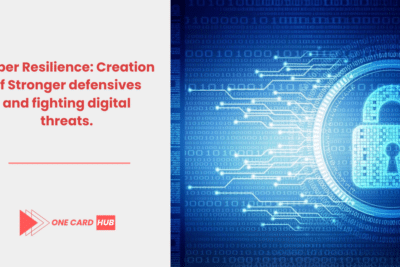

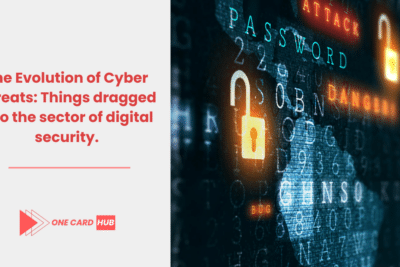
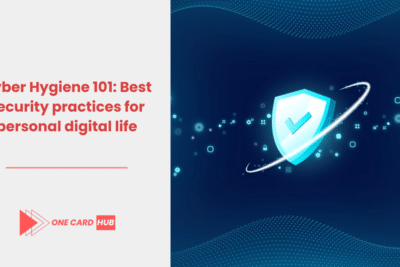
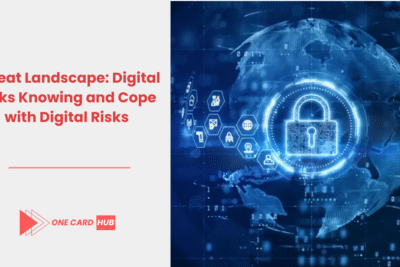
Related posts